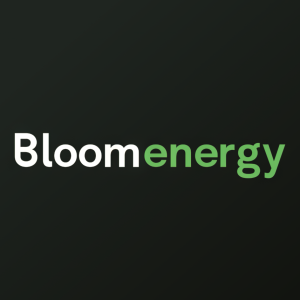Data Centers Are Turning to Onsite Power Sources to Address 35 GW Energy Gap by 2030
According to New Power Report, AI Needs Are Driving Data Centers to Adopt Energy Sources Beyond The Grid
The 2025 Data Center Power Report surveyed approximately 100 data center leaders who make decisions about power systems architecture and explored actions they are taking to address the time-to-power challenge.
Key highlights include:
-
In the
U.S. , an additional 55 GW of data center IT capacity is expected to come online in the next five years (vs. the 25 GW of existing capacity today). Approximately 20 GW of capacity has been announced to date. -
Data center leaders are taking responsibility for their power needs: approximately
30% of all sites are expected to use onsite power as a primary energy source by 2030 — more than double the percentage reported just seven months earlier. - Decision makers are now prioritizing new factors like time-to-power and the ability to support more demanding and fluctuating AI workloads, reflecting a shift beyond traditional drivers of cost and reliability.
“We see AI and cloud computing driving explosive growth in data center demand, and power availability remains the major bottleneck," said Aman Joshi, Bloom Energy’s Chief Commercial Officer. "The 2025 Data Center Power Report reveals that a growing number of data center leaders are turning to onsite power as a primary energy source. This underscores what we’re hearing from customers: they feel the urgency to address economic imperatives while ensuring reliable, scalable energy solutions." Joshi noted that customers emphasized developing onsite power arrangements in close collaboration with utilities.
According to survey participants, access to power is expected to get more challenging. Public announcements of onsite power deployments have grown rapidly and indicate growth across technologies including fuel cells, which are gaining traction.
The 2025 Data Center Power Report is based on data collected from April to November 2024. Survey respondents represent both cloud service providers, or hyperscalers, as well as single- and multi-tenant data center developers. To add depth to the survey findings, Bloom Energy also commissioned interviews with key decision-makers and reviewed research from multiple external data sources including Lawrence Berkeley National Laboratory, McKinsey & Company, and Goldman Sachs.
A copy of the Bloom Energy Data Center Power report is available here.
About Bloom Energy
Bloom Energy empowers businesses and communities to responsibly take charge of their energy. The company’s leading solid oxide platform for distributed generation of electricity and hydrogen is changing the future of energy. Fortune 100 companies around the world turn to Bloom Energy as a trusted partner to deliver lower carbon energy today and a net-zero future. For more information, visit www.bloomenergy.com.
Forward-Looking Statements
This press release contains certain forward-looking statements, which are subject to the safe harbor provisions of the Private Securities Litigation Reform Act of 1995. Forward-looking statements generally relate to future events or our future financial or operating performance. In some cases, you can identify forward-looking statements because they contain words such as “anticipate,” “believe,” “could,” “estimate,” “expect,” “intend,” “may,” “should,” “will” and “would” or the negative of these words or similar terms or expressions that concern Bloom’s expectations, strategy, priorities, plans, or intentions. These forward-looking statements include, but are not limited to, HPS and IDF’s acquisition of Bloom Energy Servers, funding of installation of Bloom equipment, new sources of capital, and Bloom’s ability to provide financed solutions without impacting capital budgets. Readers are cautioned that these forward-looking statements are only predictions and may differ materially from actual future events or results due to a variety of factors, including risks and uncertainties detailed in Bloom’s SEC filings. More information on potential risks and uncertainties that may impact Bloom’s business are set forth in Bloom’s periodic reports filed with the SEC, including its Annual Report on Form 10-K for the year ended December 31, 2023, filed with the SEC on February 15, 2024, its Quarterly Report on Form 10-Q for the quarters ended March 31, 2024, June 30, 2024, and September 30, 2024, filed with the SEC on May 9, 2024, August 8, 2024, and November 7, 2024, respectively, as well as subsequent reports filed with or furnished to the SEC. Bloom assumes no obligation to, and does not intend to, update any such forward-looking statements.
View source version on businesswire.com: https://www.businesswire.com/news/home/20250121113628/en/
Media
Bloom Energy – Katja Gagen, press@bloomenergy.com
Investors
Bloom Energy – Michael Tierney (investor@bloomenergy.com)
Source: Bloom Energy







